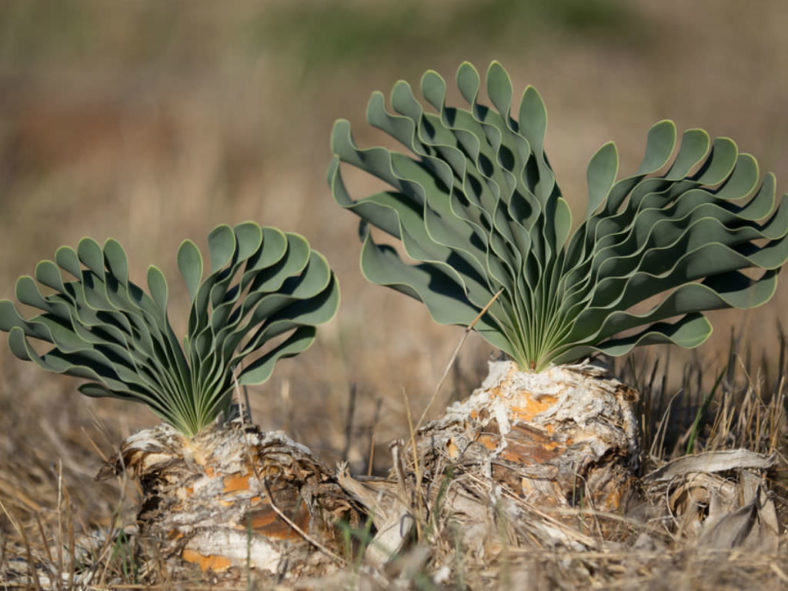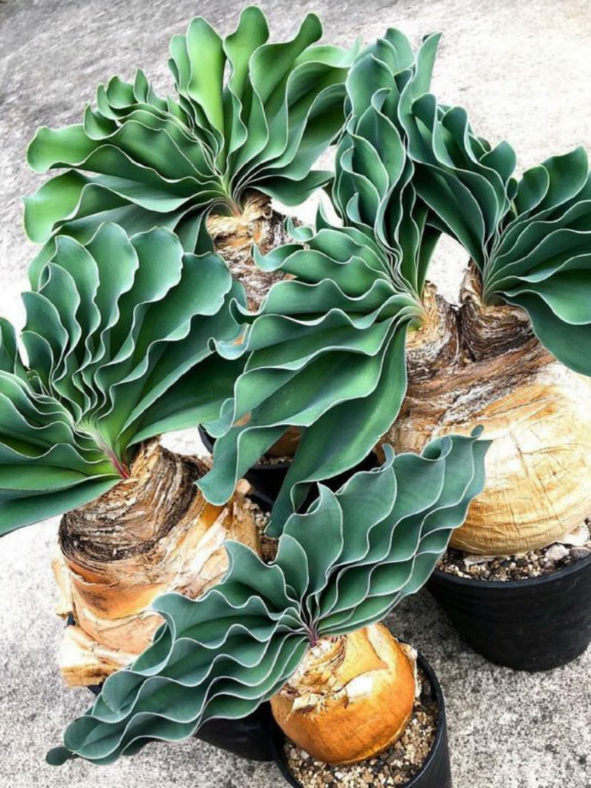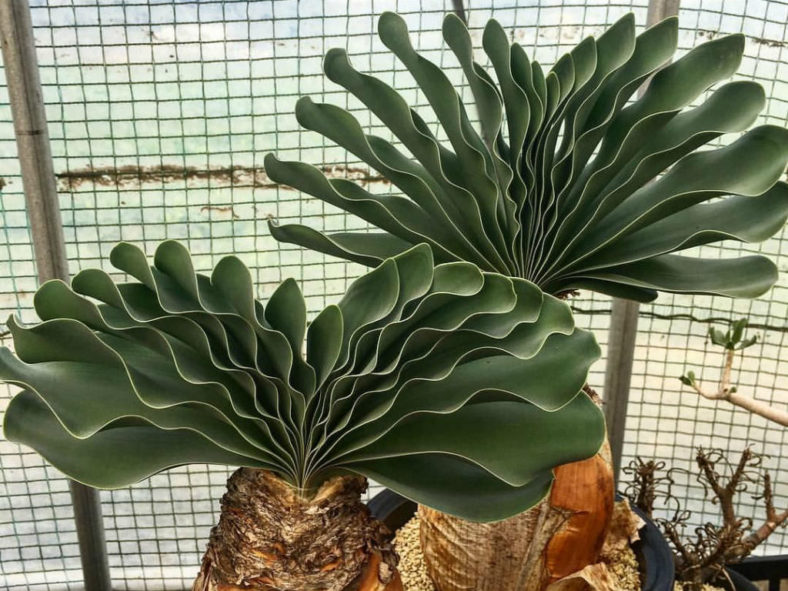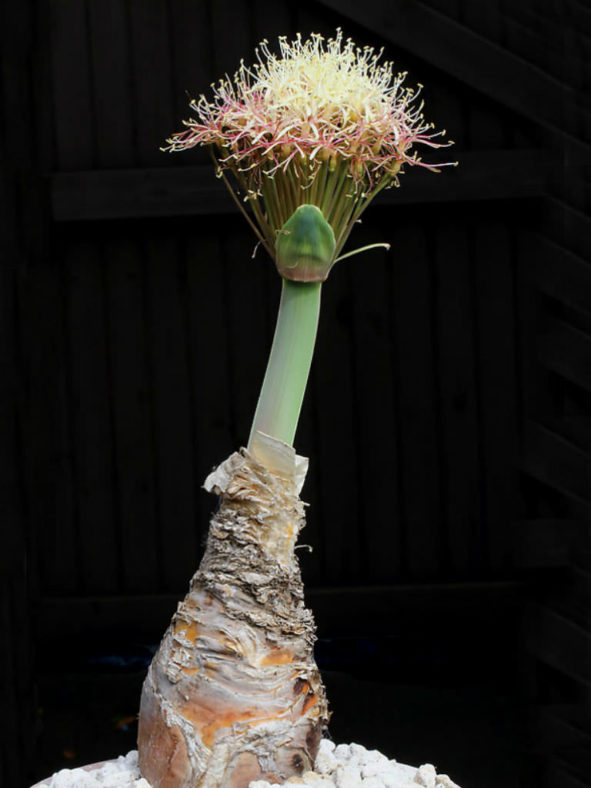Scientific Name
Boophone haemanthoides F.M.Leight.
Common Name(s)
Namaqua Century Plant, Cape Century Plant
Synonym(s)
Boophone haemanthoides subsp. haemanthoides
Scientific Classification
Family: Amaryllidaceae
Subfamily: Amaryllidoideae
Tribe: Amaryllideae
Subtribe: Boophoninae
Genus: Boophone
Origin
The native range of Boophone haemanthoides extends from southwestern Namibia to the West Coast and inland to the Roggeveld Mountains in the western Great Karoo in South Africa. It grows in coastal sands and on limestone or dolerite rocks.
Description
Boophone haemanthoides is a deciduous winter-growing and summer-flowering geophyte that grows from a large, egg-shaped bulb. It can grow up to 20 inches (50 cm)tall, forming an upright fan of up to 20 strap-shaped, intensely glaucous leaves arranged in 2 opposite rows. A great deal of the bulb can is above ground. The leaves are flat or channeled with often wavy margins and usually blunt tips, measuring up to 12 inches (30 cm) long and 4 inches (10 cm) wide.
The flowers appear in a compact, many-flowered, brush-like cluster that emerges from the center of the bulb in summer after the leaves have died back. The flower cluster is enclosed by two oval-shaped bracts and carried on a thick stalk that can be maroon, pinkish-brown, or yellow. The flower stalk can grow up to 10 inches (25 cm) tall and 1.2 inches (3 cm) in diameter. The sweet-scented flowers are initially white to creamy-yellow yellow, aging to a dull pink or reddish.

Hardiness
USDA hardiness zones 10b to 11b: from 35 °F (+1.7 °C) to 45 °F (+7.2 °C).
How to Grow and Care
Namaqua Century Plant is a striking plant for a large pot and also makes a handsome feature planted in bold groups in rock garden pockets. It is important to note that the bulbs are highly sensitive to excess moisture during the winter growing period and require a dry summer period when they are dormant.
These plants do not survive for long outdoors when planted in high-rainfall areas. They require high light intensity to grow well, preferring full sun for as much of the day as possible. A pot at least 16 inches (40 cm) deep is needed for a mature bulb. It performs well on a sunny patio when displayed as a pot subject.
Grow the bulbs in sandy, well-drained soil mixtures, such as equal parts of washed industrial and river sand. When planting Namaqua Century Plant, ensure that at least 2/3 of the bulb is above ground level.
Water the plant well once in late fall and wait for the leaves to appear. After that, provide a good soaking once per month. As soon as the leaves start to turn yellow in late spring, withhold watering and keep the bulbs as dry as possible in summer.
Namaqua Century Plant is propagated mainly by seed, as offsets rarely, if ever, occur in cultivation.
Links
- Back to genus Boophone
- Succupedia: Browse succulents by Scientific Name, Common Name, Genus, Family, USDA Hardiness Zone, Origin, or cacti by Genus
Photo Gallery
Click on a photo to see a larger version.


